On April 21,The Tianjin University Student Chapter of AIChE (American Institute of Chemical Engineers) organized its first offline visit to the chapter’s facility for international students from the School of Chemical Engineering and Technology of Tianjin University. The event offered both returning and new international students a glimpse behind the scenes of how the award-winning team operates.
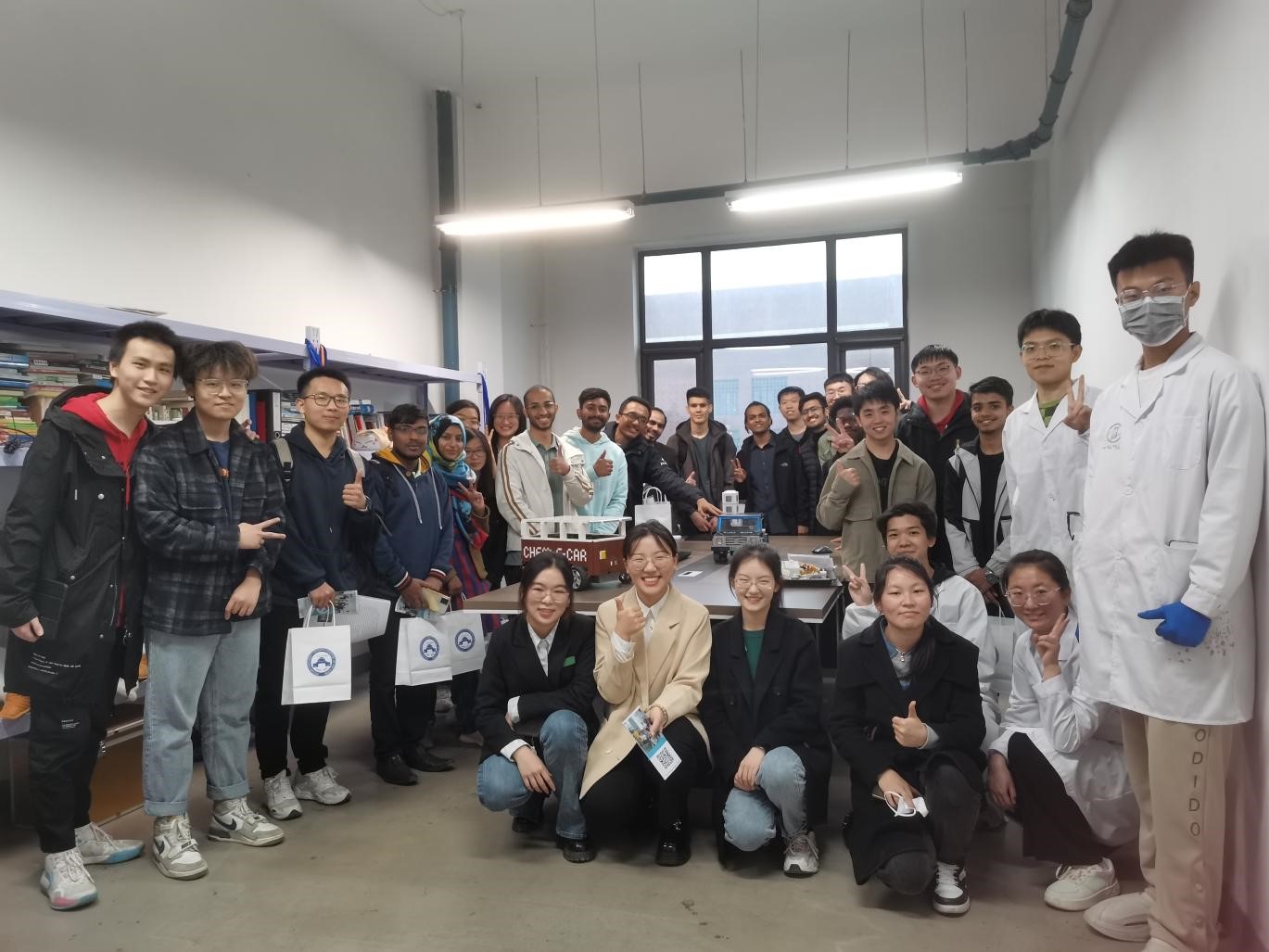
The Chem-E-Car Competition
Conducted annually by the AIChE, The Chem-E-Car competition challenges college students around the globe to design and construct a car that can not only be powered and stopped by chemical reactions, but also safely run a specific distance. The car should also contain one self-designed main component and in its disassembled state, it should be able to fit in a 20x30x40cm box. The teams will first present a detailed poster explaining the engineering and the safety aspects integrated into the car before competing in the race. In terms of judging the performance of the car, the main metric taken into consideration is dictated by the distance between the front of the car and the finishing line. The actual target distance, which is altered every year, will only be revealed one hour before the competition starts.
Introducing the Student Chapter: The first of its kind in Chinese mainland
The International students were introduced to the chapter’s duties by Xie Mengying, the Vice president of the branch. As the AIChE’s first representative and participating team from Chinese mainland, besides representing the university in the Chem-E-Car competition, the chapter is in-charge of creating a welcoming environment for college students to communicate with professors and researchers, acting as a bridge for chemical engineering students into the realms of academia and the industry through hosting regular lectures and symposiums.
The chapter consists of two major parts: the operating department and the Chem-E-Car team. The operating department’s duties lie in the daily operations of the branch and in cultivating potential Chem-E-Car team members, mainly recruiting freshmen every year.
Having participated in the competition since 2016, the Chem-E-Car team has years of experience under their belt. Composed of three parts, the team made up of 15-20 people can be further divided into the power group, modelling group and control group, which are responsible for car’s power system, the mechanical structure of the car and the car’s control system respectively. It is important to note that, though the competition is a mini chemical engineering project in essence, the team is open to students from all departments, as the competition itself requires the team to not only utilize knowledge from Chemical Engineering, but also different disciplines of science from Mechanical Engineering, Chemistry, Biology, Computer Science, Design etc.
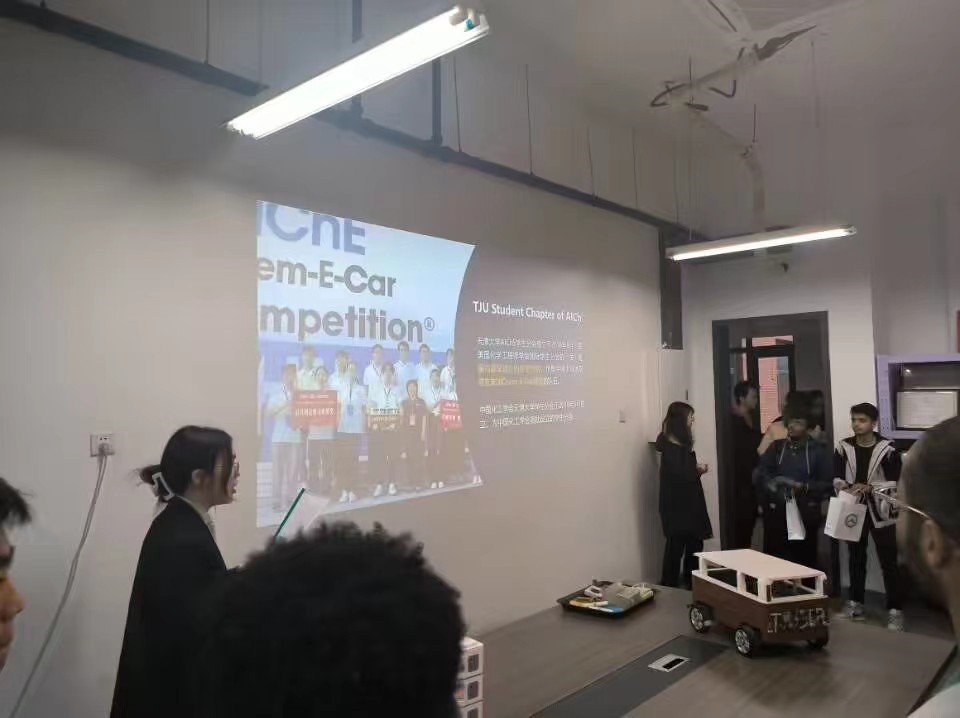
A Close-up View of the Battery
Fortunately, students present were given the chance to witness a live assembly of the team’s self-designed battery, which was part of the team’s participating project from last year’s competition. The demonstration allowed the students to gain insight into the whole process involved in making the battery, having shown the original schematic diagram of the battery, the 3D-model diagram and finally the final product respectively.
The live assembly of the battery was presented by the 2022 team captain Zhou Hengyan, where students were given a close-up view of the multiple prototypes of the battery plus a detailed explanation into the trial-and-error process in designing the battery. The team captain stated the problems met during the modelling process of the battery and detailed their solutions to these problems in the form of each prototype, undoubtedly a valued skill not only in a competition, but in every part of the science and engineering field.
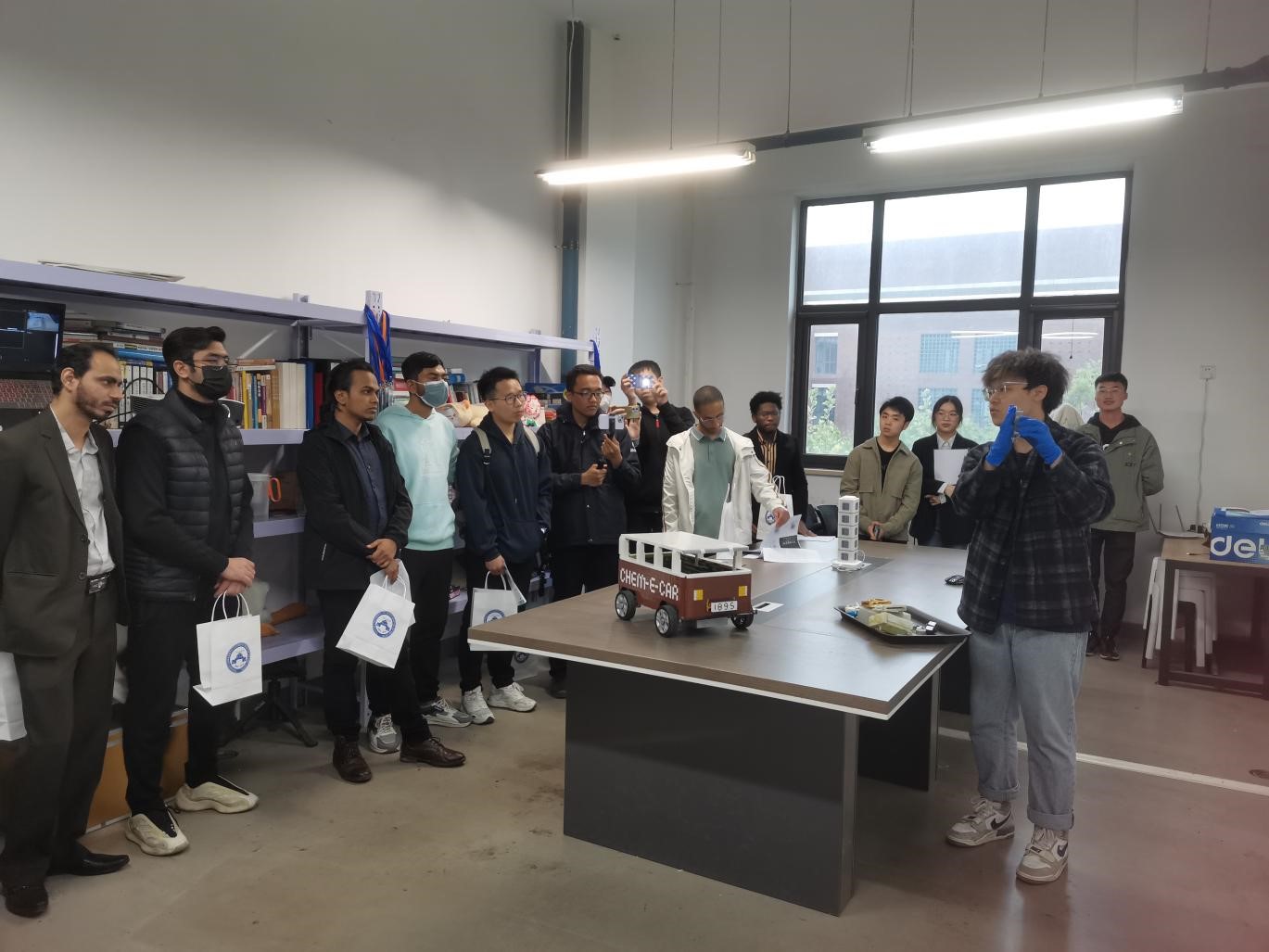
Mingling Aesthetics and Practicality: Designing the Build of the Car
Following that, the 7th Vice Captain of the team named Chen Zhenglin introduced the modelling group of the team. He explained that the members of the modelling group are skilled at using Arduino, AutoCAD, SOLIDWORKS and other modelling software to aid the power and control group in designing the battery model, constructing the control module and also designing the exterior of the car.
A detailed explanation followed as he proceeded to introduce the model of the car from last year’s competition, from the use of a carbon fiber plate at the bottom of the car, to the assembly of the battery and the Arduino controlling module inside the car. The body of the car was built with the use of LEGO bricks and the SNOT (Studs Not On Top) building principle to ensure the stability and efficiency of the car. Taking inspiration from the steampunk genre, the car was built in the shape of a classic bus with a white and brown color scheme in mind, the final outcome pragmatic yet still aesthetically-pleasing to the eye.
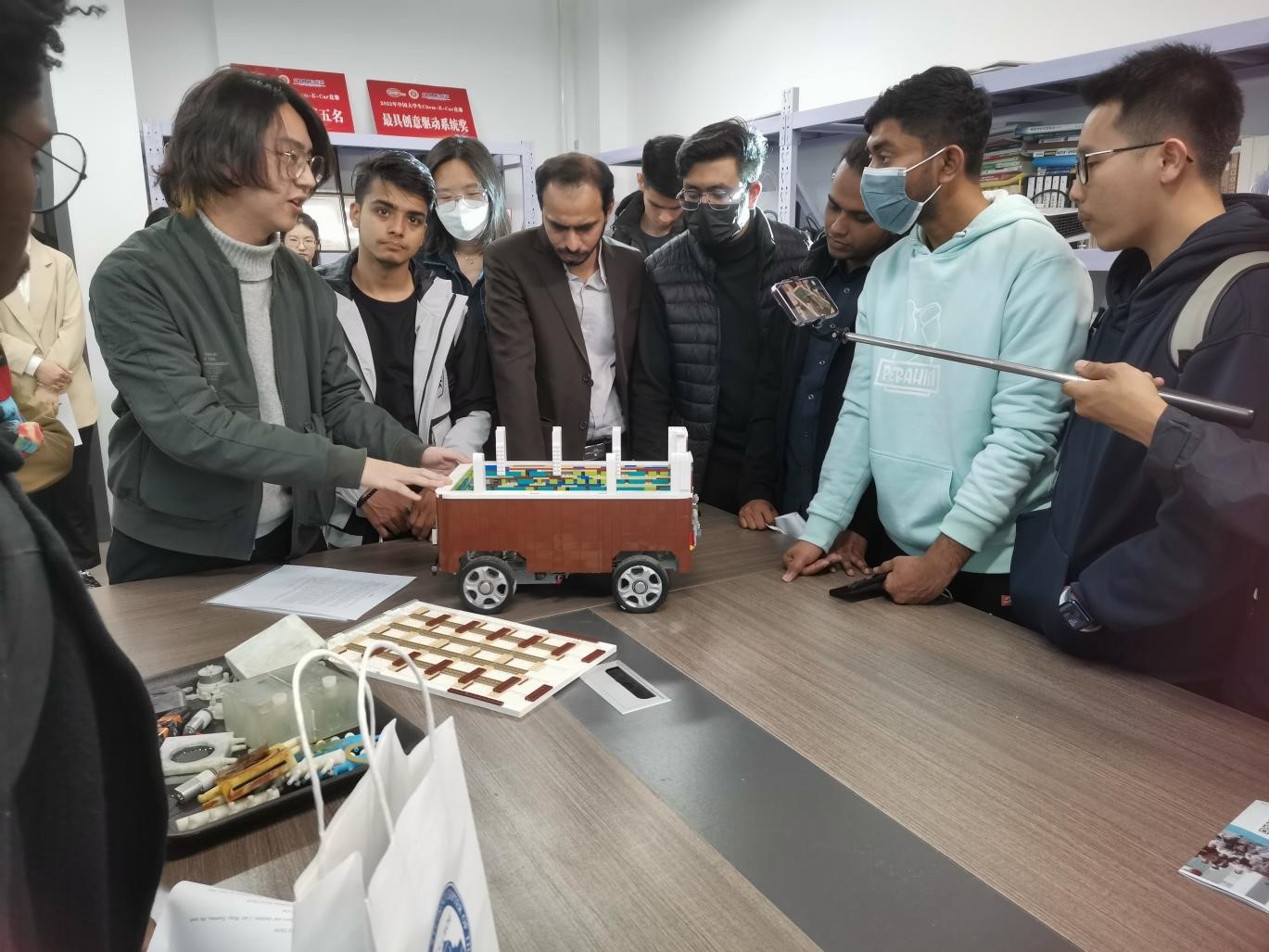
Vehicle Drive System
Moving on to the chemical reactions that control the car, the visiting students were relocated to the experimental lab, whereby two experiments were conducted to showcase both the 2021 and 2022 main reactions used for the competitions. The first reaction demonstrated was the iodine clock experiment. The Chapter President Li Ting introduced the main reagents being H2O2, Lugol’s iodine and Vitamin C solution. Essentially, the iodine clock stays clear in the beginning and while the car is running, allowing light to pass through to the photocell. The solution turns black once the reaction is triggered, and without light passing through the fluid to the photocell, the absence of light acts as a signal to shut off the breaker and stop the car.
The team leader Wang Xuanhao took charge in explaining the second experiment, which was the Luminol reaction. Luminol emits a blue fluorescence when it is oxidized and this light fades gradually with time. So, with a light sensor and a control panel to convert the light signal to an electrical signal, the car could be controlled to maneuver and halt under a set time frame by altering the volume of the reaction liquid. A black box was specially made to block the influence of natural light, while the inner surface of the box was covered with a reflective tape to optimize the light captured by the sensor.
An Invitation to TJU International Students
After a short Q&A session, the fruitful visit came to a close. Before bidding farewell, the Chairman of the Chapter Li Ting expressed a warm welcome to all International students to join the family, as the chapter is open for recruitment applications in October every year. She also encouraged students to participate in a fun mini car-making competition held by the chapter around August to September at the beginning of every Autumn semester. When inquired the criteria for joining the team, she stated that showing a great interest in the field and the willingness to learn during the interview will be a few of the main aspects that they will consider. As a final note, she added that students will be able to stay up to date with the Chapter’s future activities by following their official WeChat account. Interested students may scan the QR code below to learn more.
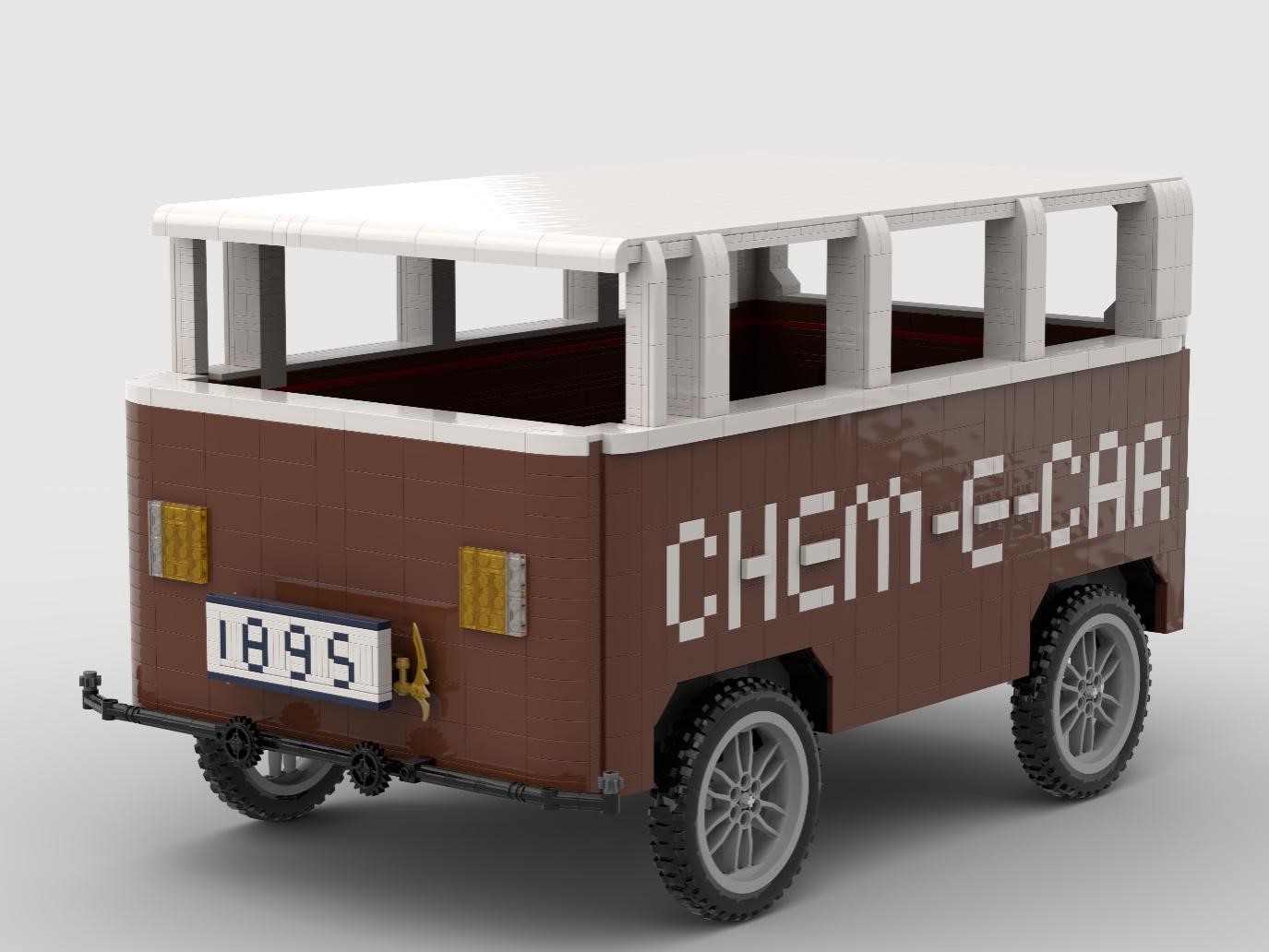
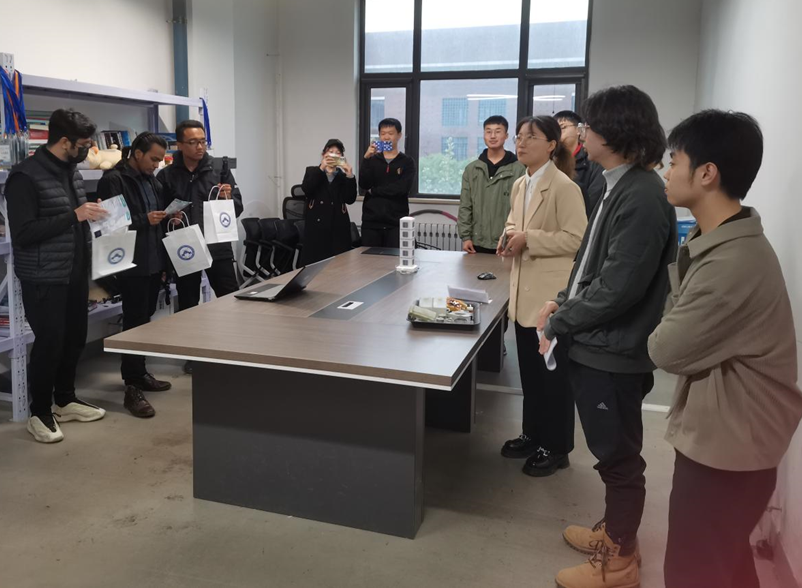
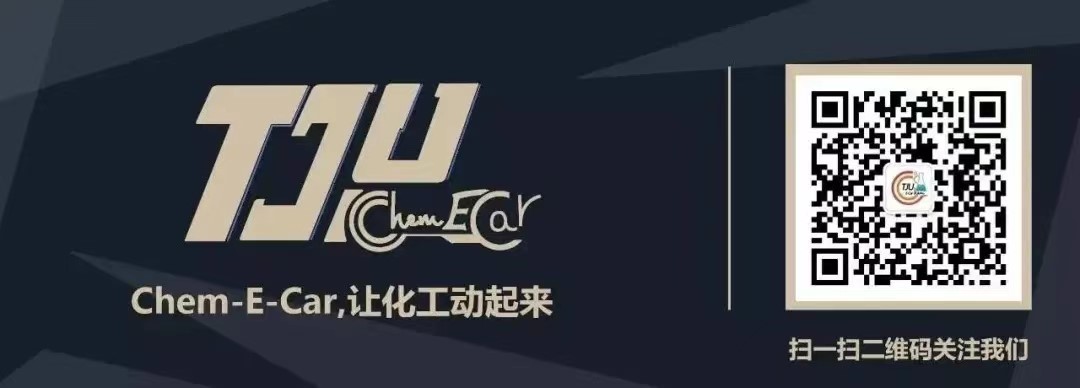
By LOH XIU YU (international student majored in Chemical Engineering and Technology), LI TING (Chapter President), School of Chemical Engineering and Technology
Editor: Sun Xiaofang






